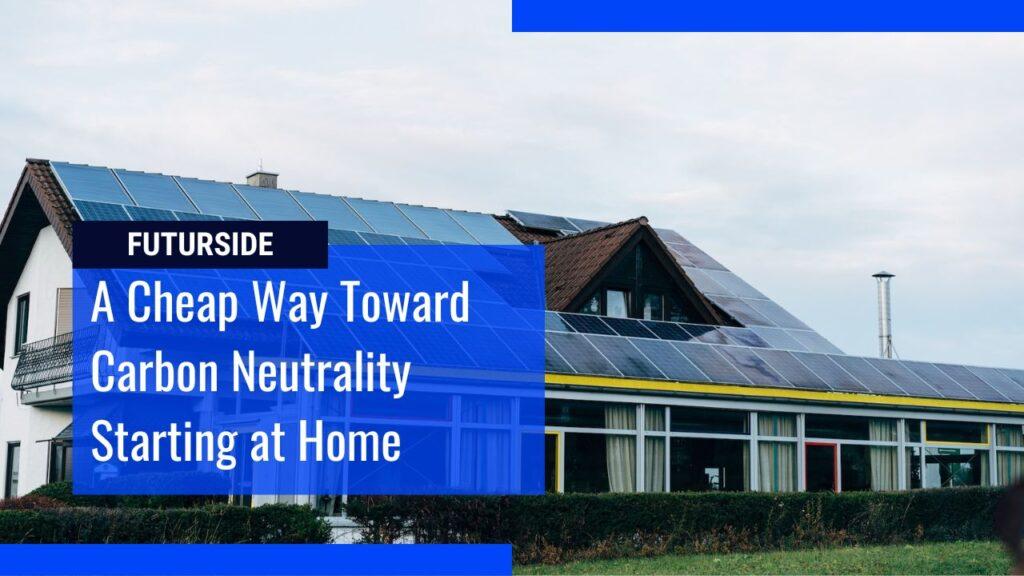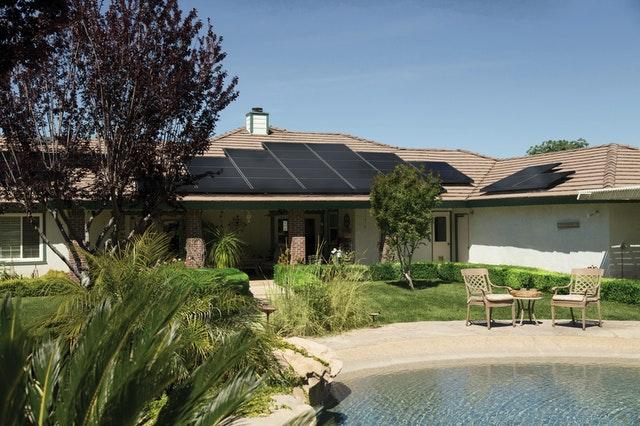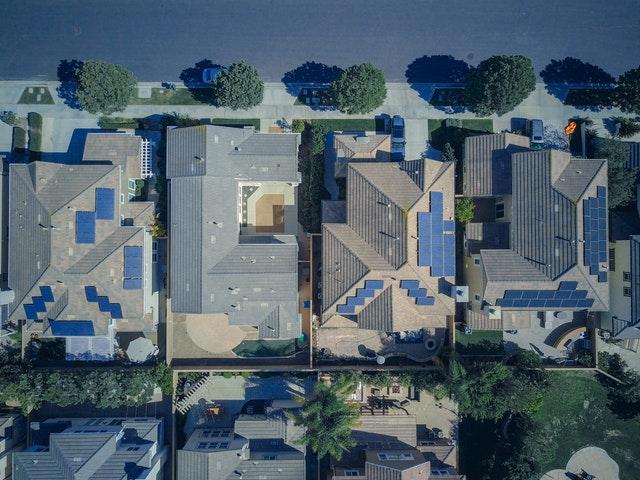Owning a home is an important life milestone for a lot of people, but the ever-increasing cost of construction materials and increasing housing prices is a major roadblocks. And on top of that, traditional construction methods and materials cause a surprising amount of gas emissions and waste.
You probably don’t realize it, but buildings account for 40% of our carbon emissions. But the technology exists to make our homes carbon-neutral or even carbon negative. There are trends around more sustainable building practices which is cleaner and extremely energy-efficient and still customizable.

Contents
What is a net-zero home?
In simple terms, a net-zero home produces as much energy as it consumes. These dwellings are designed to be 80% more energy-efficient than conventional ones. They use less energy and are oriented to take advantage of passive heating and cooling. A carbon-neutral home is designed to use less energy than it produces and it cost less to run the property as such the owner saves money on utilities.
A carbon-neutral home is combined with advanced building science technologies and renewable energy. This means that a combination of high-performance envelopes, passive solar heating, and high-performance windows are installed. Windows are a major source of heat loss. These properties use triple-pane windows with insulating spacers in-between panes. The glazing is optimized to reduce heat loss to the outdoors and encourage solar energy to enter the home.

With highly efficient windows, good ventilation, and high-quality insulation, the temperature of the house remain comfortable without needing a lot of heating or air conditioning. You’ll also want to install energy-efficient appliances, such as LED lighting and water-saving faucets and showerheads. You’ll be happy to know that you won’t have to buy any more electricity or gas.
It purchases zero power from the local electricity grid company. In short, a net-zero house creates as much energy as it consumes. The goal is to have a zero energy bill each year, which can be a big plus for owners. While this type of house is a unique concept in its own way, it’s important to remember that it can still be connected to the grid to meet changing utility needs.
Importance of net-zero home
A net-zero home is known to have numerous benefits. It can control air temperatures more accurately and reduce drafts. Moreover, a tight house muffles outside noises and helps maintain healthy air. One of the most compelling reasons to build a carbon-neutral house is its cost-effectiveness. It requires less power than average homes.
They are also more energy-efficient, a significant benefit if you live in an area where climate change is common. For instance, a carbon-neutral property can be built in a climate-neutral region, which helps the environment. Carbon credits are purchased through brokers who then funnel the money to carbon sequestering projects, such as rainforest restoration projects and companies that manufacture wind turbines.
The second factor is the amount of renewable energy generated by the building. The carbon-neutral house source its energy from the sun and wind. And the energy can be stored in batteries. These dwellings are built in a way to reduce energy loss and are incorporated with solar panels. They are even built to be off-grid in case of an emergency.
And with the use of energy-efficient appliances, the home can produce more electricity than they consume. Also, as it produces its own electricity, the owner can be more energy conscious and reduces wastage. Not to mention electricity is among the things that people take for granted in today’s world.
Energy-efficient appliances can reduce or eliminate miscellaneous electric loads. Additionally, they can reduce standby power and minimize unused appliances. And a net-zero home can be built according to Earth-sheltered building principles, with superinsulation walls and prefabricated building panels. It is also scalable and can be used in commercial office buildings.
While net-zero houses can range from small cottages to multi-story buildings, they usually cost 6.7% to 8.1% more than conventional construction. The cost of purchasing this type of property is high. However, it is a more affordable investment in the long run. The savings from running them will more than compensate for the cost.
Hence, the cost of operating a carbon-neutral house is significantly lower than the cost of a traditional one. Ultimately, it’s an investment that pays off in the long run. In addition, homeowners of net zero dwellings are typically more energy independent and less likely to face foreclosure.
The costs of heating oil are driving the trend toward carbon-neutral homes. And technology has become cheaper and more affordable than ever before. Heat pumps and solar photovoltaic systems are widely available. Hence, driving costs down and the annual operating costs tend to get lower. If the cost of zero energy homes continues to fall, this trend is set to continue.
This type of property helps the environment and it can be an efficient way to sequester carbon. As the cost of heating oil continues to rise, many people are turning to this option to lower their monthly expenses. With their newfound resilience, a carbon-neutral home is a great way to protect low-income communities from extreme weather.
A recent survey found that 62% of Americans view global warming as an urgent threat and that drastic action is necessary to prevent the climate from becoming unmanageable. This trend is expected to continue, more people choosing energy-efficient options and zero energy homes in particular as a way to help the environment.
Why do we need net zero homes?
Net-zero homes have many benefits over traditional ones. They are built with renewable energy and are highly energy efficient. In addition, they are insulated and air-tight. As a result, they have lower energy bills and less maintenance. Plus, they require fewer repairs than conventional houses.
Moreover, they will also produce as much renewable power as they consume. The resulting homes are highly efficient, paying for themselves quickly compared to traditional utility costs. The electricity they save will go toward keeping the building comfortable year-round.

Comfort is one of the biggest benefits of a net-zero home. Because they are air-tight and highly insulated, they don’t experience drafts or cold rooms during the winter and hot rooms in the summer. The lack of moisture and drafts also means you won’t have to worry about mold or water damage. Additionally, these dwellings have more natural sunlight and provide healthier air to breathe.
As a result, homeowners who opt for a net-zero home will contribute to a livable climate for future generations. As the number of carbon-neutral homes increases, more people will be able to afford them. And because they are more energy-efficient than their traditional counterparts, in the future they will be more affordable than ever to buy.
A carbon-neutral home produces as much renewable energy as it uses annually. They achieve this by building renewable energy systems directly on site. The efficiency of these systems allows for lower building operations costs and allows for a zero tax burden. In addition, these electricity generation resources are free to use.
While net-zero homes are naturally electricity-efficient, they still require additional lighting. Fortunately, there are energy-efficient lighting solutions that can make up the difference. Installing strategically placed energy-saving LED lights can provide the right amount of illumination for any occasion.
While these systems are expensive to purchase, they will be well worth it in the long run. Many people aren’t quite ready to spend the money on a carbon-neutral home, they still want to be greener and save more money on their electricity bills. In some instances, a modest grid-tied PV solar power system can provide a net-zero level of electricity, but this isn’t a realistic goal for most people.
Net zero homes reduce emissions and help keep the planet’s air quality livable for future generations. By making buildings carbon neutral, we are helping to create a more sustainable world. Buildings are the largest source of greenhouse gases in the world, so it’s important to start thinking about carbon neutrality now.
Buildings also contribute almost a quarter of the country’s greenhouse gas emissions. That’s why carbon-neutral homes are so important in today’s volatile energy market. In near future, more home buyers will be looking for net-zero residences. As it reduces electricity costs, it helps combat climate change and improve the air quality in cities.
While a carbon-neutral home may be a luxury, it is a good choice for many homeowners. However, there are also more affordable home energy solutions if net zero seem out of reach. Solar photovoltaic panels can be a more affordable solution.. With solar photovoltaic panels falling in price over the last few years and there are also grant by governments that people can take advantage of.
Net zero houses are designed to be energy-neutral and reduce their carbon footprint. Some can even include additional systems for water, food and waste. These systems increase net-zero dwelling water efficiency and ecological health. You can also find state incentives for this type of house through a national database.
Although net-zero dwellings are often associated with wealthy households, climate change is making this trend affordable to everyone, including low-income families. The idea is so appealing because lower-income households are particularly vulnerable to extreme weather. Moreover, these homes are more affordable than conventional houses in terms of lower electricity bills for these homeowners.
Future of net-zero house
Originally a niche housing market, carbon-neutral houses are becoming an increasingly viable and affordable option. Solar-power system prices have fallen nearly 50% since 2010. The future of net-zero homes is bright and the future is now. And as more people become concerned about the environment, the demand for these types of dwellings will grow rapidly.
The concept of building a net-zero home isn’t just about being energy efficient. The concept is also about helping the environment by reducing carbon footprint. In fact, it can even produce more energy than it uses. More home buyers are demanding that their future homes be carbon neutral. The increasing demand for such homes is encouraging developers to step up their efforts to build them.
The future of net-zero houses is bright and promising. Creating these homes could make our planet a healthier place to live. Sustainable communities will become the norm. These communities are rapidly emerging and will soon play a role in clean urban development. Other green design options include tiny homes, green buildings, green city and smart buildings.
As part of the “green movement,” carbon-neutral homes combat climate change by reducing electricity use. They are comfortable too since they are insulated and tightly sealed. This means you don’t have to worry about drafts. And because these homes are so airtight, they also muffle noise from outside. Controlled ventilation also helps keep the air healthy.
While many jurisdictions are mandating carbon-neutral buildings, others are promoting them. By focusing on energy efficiency, they will attract trillions of dollars in capital. In addition, a number of prefabricated buildings will also help local manufacturing, creating new green jobs. This trend will continue to grow as housing continues to become more sustainable.

0 Comments